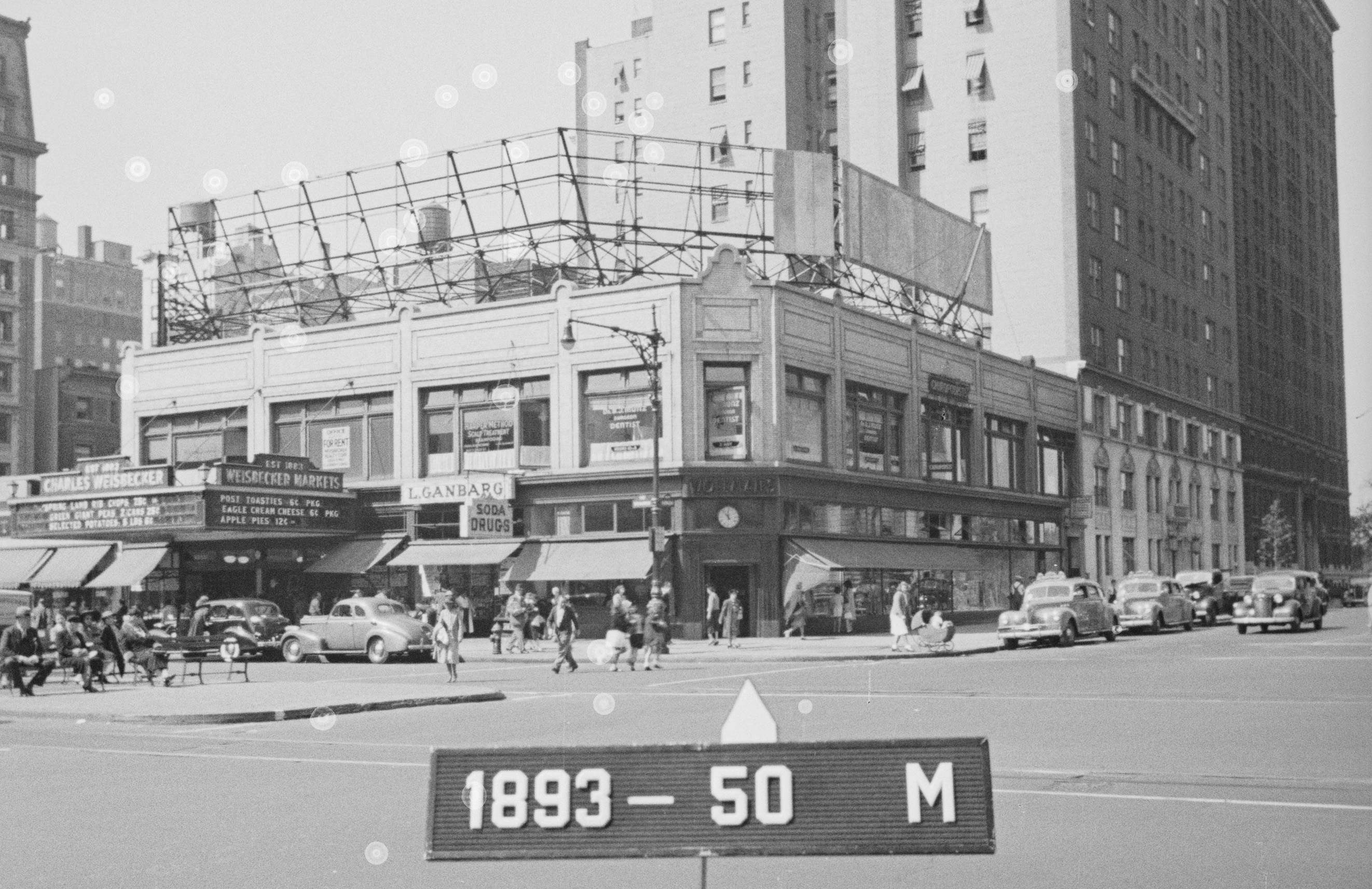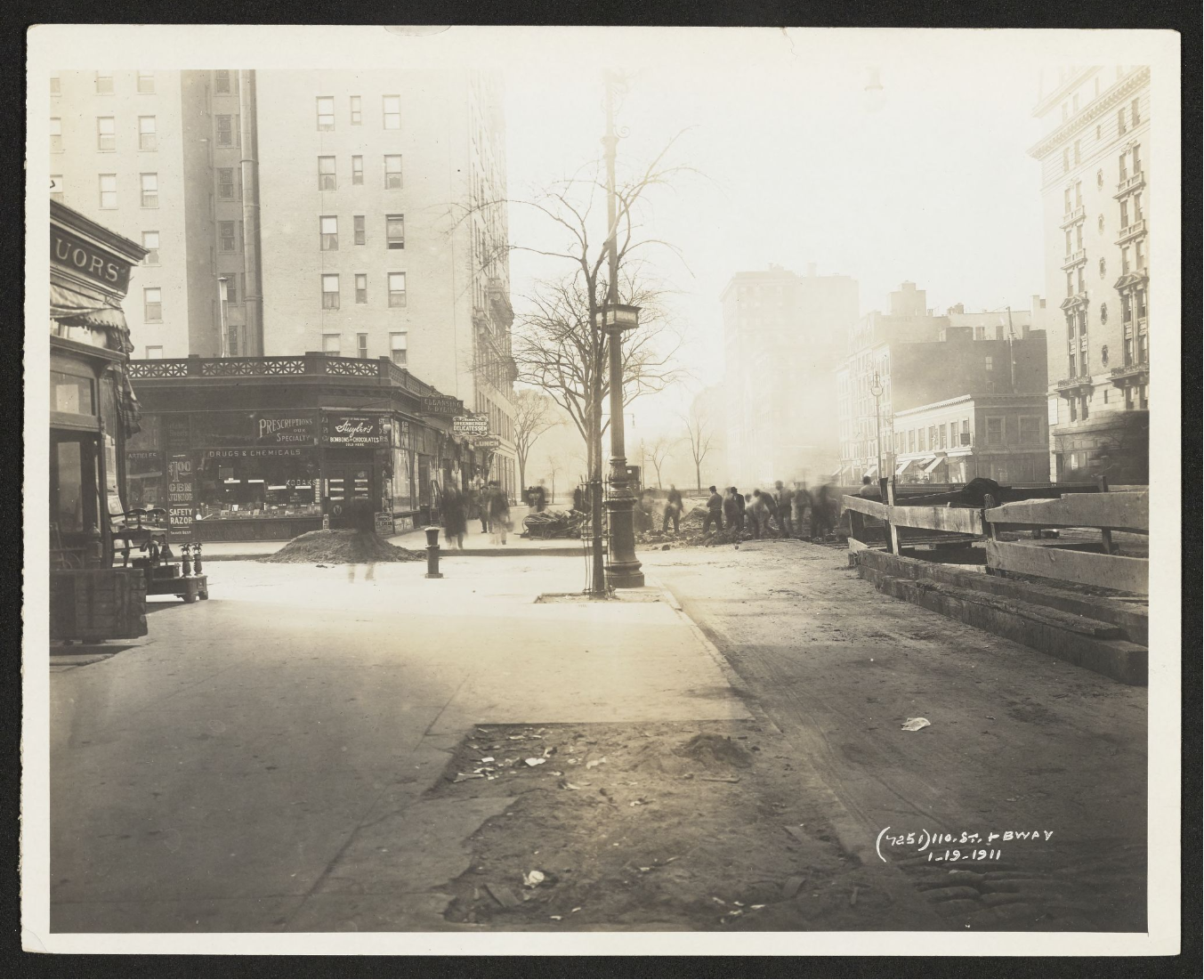
2833-2839 Broadway
by Tom Miller
On October 22, 1910, the Real Estate Record & Guide remarked, “A year has made a great difference in that quarter of the city where Broadway intersects 110th st. (Cathedral Parkway). This is particularly noticeable at night, when the sidewalks are thronged with people, and Broadway is ablaze with lights from long lines of smart store windows that have taken the place of the high board fences of old.” The article made note of the Manhasset apartment house on the northwest corner of Broadway, and the “very pretty theatre for vaudeville and pictures” on the east side of Broadway.
The intersection was about to get another new building. The Robert E. Westcott Estate commissioned Townsend, Steinle & Haskell to design a two-story taxpayer to replace the old buildings at the southwest corner of Broadway and 110th Street. The term “taxpayer” referred to a building, normally one or two stories in height, erected to bring in enough income to pay the real estate taxes. They were most often relatively temporary.
The architects drew inspiration from the Arts & Crafts style, foregoing a cornice in favor of a decorative parapet. Completed in 1911, its second-floor Chicago Style windows were state of the art for commercial buildings. Townsend, Steinle & Haskell chamfered the corner to provide a lobby for the upper-floor offices.
“Broadway is ablaze with lights from long lines of smart store windows that have taken the place of the high board fences of old.”
Charles Weisbecker was described by the Record & Guide as “proprietor of a large market in Harlem.” Even before the structure was completed, he leased 13,500 square feet for a grocery. His store engulfed the two southern ground floor spaces on the Broadway side. Weisbecker installed a theater marquee over the entrance on which he could display special prices. In 1913 the Blue Ribbon Candy Co., Inc. signed a ten-year lease on the corner store.
The Cathedral Parkway Gallery occupied the store between Weisbecker’s market and the Blue Ribbon Candy Store in 1915. On May 11 that year, the New-York Tribune remarked that “The exhibition of oil paintings, watercolors and etchings by F. K. Detwiller” here was “attracting much attention.” The article noted, “The American series of water colors consists of scenes in Vineyard Haven, Ogunquit and Provincetown.”
By 1913 the Hartford Lunch Company occupied part of the ground floor. In 1916 it touted its “Yankee Donuts,” saying “The doughnuts served by us have perhaps done as much to spread the fame of Hartford Lunches as any other one thing. Our doughnuts are light, puffy, rich and deliciously toothsome.”
Early on the morning of March 17, 1919, four gunmen entered the Hartford Lunch. In minutes they held it up, then ran to a running black automobile and sped off. They had already targeted Samuel Levinson’s drugstore on Manhattan Avenue near 106th Street, and before dawn, they would also rob a saloon and a pedestrian.
Based on a drugstore customer’s description of John Sheehan’s heavily scarred hands, he was captured the next day. Sheehan was the driver of the getaway car. The Evening World succinctly reported, “He talked.” Three more thieves were captured, including Bernard T. McGarry, described by the article as “said to be the ‘brains’ of the gang.” The fifth culprit would be more difficult to apprehend. When detectives Quinn and Schmitt cornered Charles Kane, he ran. He was stopped by a bullet in the back of his neck. Fred Curtin, the manager of the Hartford Lunch was taken to the Harlem Hospital. There, said The Evening World, he “identified [Kane] as the tall man with a long nose and two guns who appeared to be the captain of the Monday morning hold-up.”
In the meantime, the upper floor offices were home to small businessmen, like real estate agent Frank E. Schaeffler who signed a lease in 1914. He dealt not only in general real estate sales. David Owens had a similar business, selling real estate insurance here in 1917. A more surprising tenant came in 1918. In March the Record & Guide reported that the Robert E. Westcott Estate had leased space on the second floor to the Seventh Church of Christ, Scientist.
He was stopped by a bullet in the back of his neck.
The Weisbecker Market would remain in the building at least through 1941. It had been the scene of a dramatic encounter on November 1, 1933 when Rose Arber came in, selected a dozen oranges and walked out without paying. An employee, Stephen Alesi, rushed out and brought her back into the store, holding her until a policeman arrived. Rose paid for the oranges and was released. But the story did not end there.
Rose Arber sued Charles Weisbecker for $2,182.75 (about $38,800 in 2023), claiming that Alesi had “threatened her,” that he had “created a disturbance and caused a crowd to congregate” in front of the store, and he had put his hands on her. Rose was awarded the full damages.
The Weisbecker Market was replaced by a Daitch-Shopwell Food Market in the 1950s. It remained until 1964 when it moved across the street to the former Nemo Theatre site. The building was given an updating in 1966. The general usage of the spaces remained however, essentially the same, with stores on the first floor and offices on the second.
Sloan’s Supermarket moved into the ground floor around 1973 and remained into the 1990’s. Then, in 1999, the building was renovated again. It seems that it was then that the second floor was shaved off. The building was home to a Rite Aid pharmacy in the early 2000s, and today a CVS Pharmacy occupies the space.
Tom Miller is a social historian and blogger at daytoninmanhattan.blogspot.com
BUILDING DATABASE
Keep Exploring
Be a part of history!
Think Local First to support the business currently at 2833-2839 Broadway:



